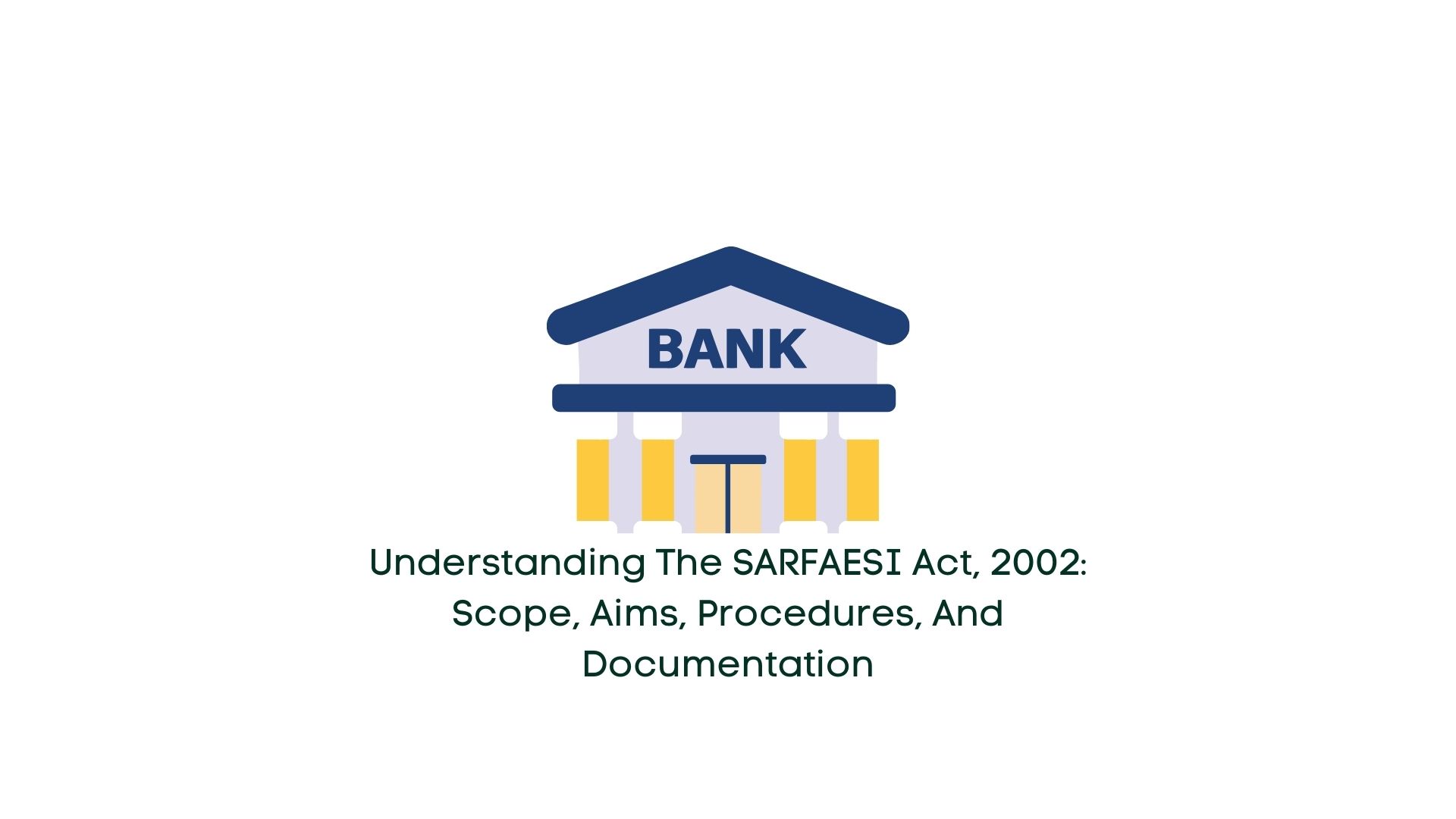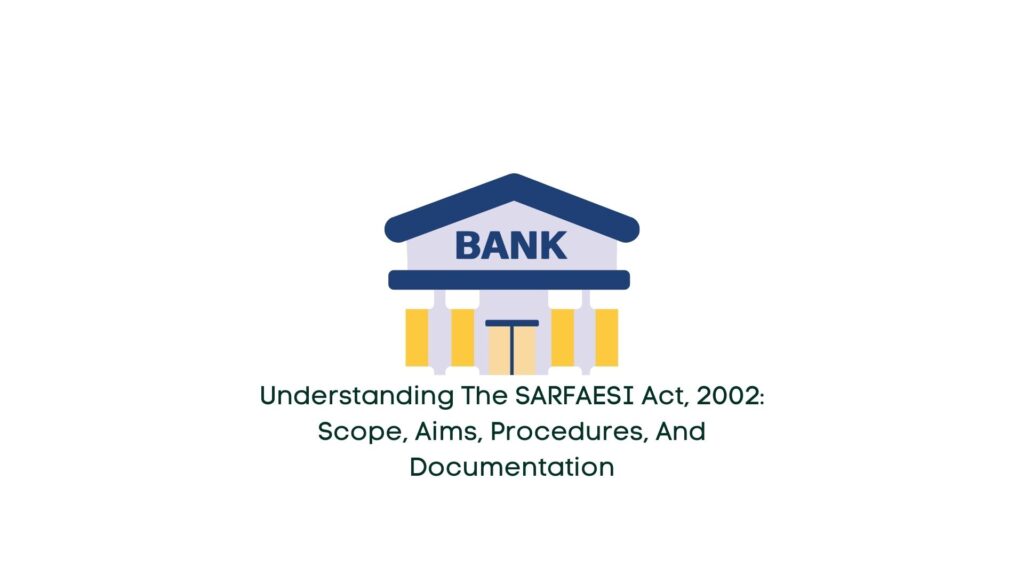
18 Mar Understanding the SARFAESI Act, 2002: Scope, Aims, Procedures, and Documentation

India’s financial sector plays a crucial role in the country’s economic development. However, outdated legal frameworks hindered the efficient recovery of defaulted loans and contributed to rising nonperforming assets (NPAs). In response, various committees, including the Narasimham Committee I and II and the Andhyarujina Committee, were formed to examine banking sector reforms and propose changes in the legal system.
What is the SARFAESI Act, 2002?
The SARFAESI Act, short for the “Securitization and Reconstruction of Financial Assets and Enforcement of Security Interest Act,” empowers banks and financial institutions to auction commercial or residential properties to recover loans when borrowers default. It allows for the reduction of Non-Performing Assets (NPAs) through recovery methods and reconstruction.
Applicability and Objectives
The SARFAESI Act applies to secured loans, enabling banks to seize properties without court intervention, except for agricultural land. Its objectives include facilitating the recovery of NPAs, enabling banks to auction properties, and streamlining the recovery process.
Key Provisions and Processes
The Act regulates Asset Reconstruction Companies (ARCs) and facilitates the securitization of financial assets. It empowers banks to take possession of securities and manage them, appoint managers, or lease/sell the assets. Borrowers are given a 60-day notice period to discharge liabilities before action is taken.
Role and Amendments
The SARFAESI Act allows banks and ARCs to convert debt into equity, adjust debt with property value, and sell properties with deferred payments. Borrowers have rights to remit dues, receive officer default compensation, and approach Debt Recovery Tribunals for grievances.
Methods of Recovery
Recovery under the SARFAESI Act includes securitization, asset reconstruction, and enforcement of security without court intervention. These methods enable financial institutions to efficiently recover NPAs.
Assets Not Covered
Assets not covered by the SARFAESI Act include those under the Sale of Goods Act or Indian Contract Act, properties not liable for attachment under civil procedure laws, and conditional contracts without security interests.
Conclusion
The SARFAESI Act, 2002, strengthens India’s financial sector by providing effective mechanisms for loan recovery. Its provisions empower banks and financial institutions to streamline the recovery process, reduce NPAs, and foster economic stability.


No Comments